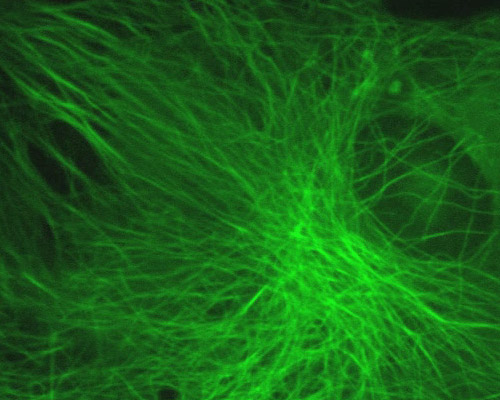Grey Fox Lung Cells with mEmerald-MAP4

There are several differences between the grey fox and the majority of all other canids including its grayish upper body, strong neck and black-tipped tail as well as its skull - it has temporal ridges that are widely separated and form a U-shape. There is hardly any sexual dimorphism, except for the males being slightly larger than females.
Microtubules were highlighted in cultured fox lung fibroblast cells with the green fluorescent protein mEmerald fused to MAP4. MAPs are microtubule-associated proteins that fuse with tubulin subunits to help regulate the stability of the intracellular microtubule network. Some MAPS are cell-type specific, but MAP4 is ubiquitous in almost all cells. Research suggests that MAP4 helps stabilize microtubules and plays a role in mitosis. Similar to other MAPs, MAP4 needs to undergo phosphorylation in order to bind to tubulin, a process that necessitates a microtubule-affinity-regulating kinase (MARK).
EGFP is an enhanced version of GFP, the green fluorescent protein initially isolated from the jellyfish Aequorea victoria. mEmerald is a high-performance variant of EGFP. Both the brightness and photostability of mEmerald are superior to that of EGFP. A fast photobleaching component, however, can render mEmerald a less than ideal choice in certain quantitative imaging applications.



